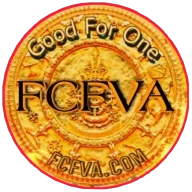We’ve all heard the adages – “a penny saved is a penny earned” and “easy come, easy go.” But have you really stopped to consider the implications of how you earn and spend your money? In our increasingly fast-paced world, it’s crucial to understand the difference between “fast money” and “slow money” and how to balance the two for long-term financial success.
Fast Money Defined

Fast money refers to income that comes in quick bursts with relatively little effort behind it. Some examples include:
- Winning a lottery or casino jackpot
- Earning a lucrative bonus or commission
- Receiving an inheritance
- Investing in a “hot” stock and selling quickly for a big profit
The allure of fast money is obvious – it’s exciting to acquire a windfall with the luck of the draw or the timing of smart investment. However, fast money can be fleeting if not handled properly.
Slow Money Explained

On the flip side, slow money accumulates gradually through sustained effort and discipline over months and years. It is the result of diligently showing up, working hard, spending prudently, and letting the power of compound growth work its magic. Slow money streams include:
- Earnings from your career or small business
- Dividends from long-term investments
- Savings from living below your means
- Appreciating assets like real estate
While slow money may not provide the adrenaline rush of a sudden windfall, it leads to lasting wealth built on a firm foundation.
The Pros and Cons

Fast Money Pros:
- Exciting and satisfying
- Potential to significantly upgrade your lifestyle
- Ability to pay off debts quickly
- Funding to invest in businesses or properties
Fast Money Cons:
- Often spent recklessly on luxury goods
- Can lead to unhealthy attitudes about money
- Taxes may dramatically cut into the windfall
- Creating unrealistic future expectations

Slow Money Pros:
- Stable, reliable stream of income
- Imbues habits of discipline and patience
- Avoids the booms and busts of quick money
- Promotes long-term wealth accumulation
Slow Money Cons:
- Requires sacrifice of current spending
- Can feel tedious over decades of saving
- May miss opportunities due to oversized caution
- Slower path to upgrading one’s lifestyle
The Ideal Balance

The wisest approach blends the two money flows – capitalizing on valuable fast money opportunities when they arise, while living primarily off your slow money base. Spend the fast money windfalls prudently by:
- Paying off all high-interest debt
- Maxing out retirement accounts
- Making a smart investment (e.g. income property)
- Allowing lifestyle inflation in moderation
At the same time, focus on increasing and optimizing your slow money streams through conscious career decisions, consistent investing, frugal living, and patience.
The goal? Creating an upward spiral where your base of slow money perpetually expands, providing you stability and options. When a fast money windfall blows in, you can adroitly deploy it to propel your wealth higher.
Embrace the thrill of fast money when merited, but never underestimate the power of its slow-burning counterpart. The two used in concert are the key to arising from the rat race into the realm of financial freedom and prosperity.

